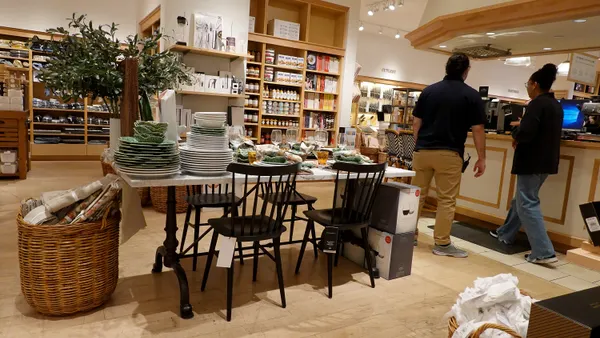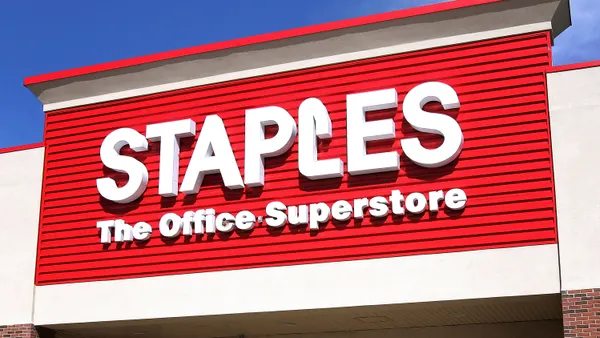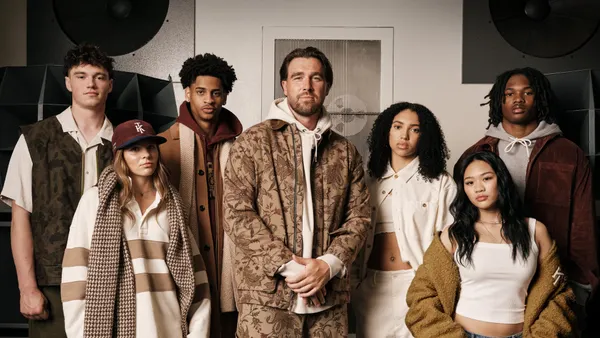Coming off a year that set records for bankruptcies and store closures, the message at Future Stores Miami last week was clear: Retail isn't dead, mediocre retail is dead.
During the intimate, three-day conference, this phrase was repeated many times over by executives eagerly trying to breathe new life into traditional brick-and-mortar retail. While some panels and keynote speeches focused on the role that technology and data can play in forming the store of the future, the biggest trend to come out of the show was much simpler: instilling humanity.
In an age where customers are increasingly trusting robots to make recommendations, order toilet paper and ship packages to their door, differentiation should be grounded in what kind of a relationship retailers can offer. And for many, that means starting by investing more in stores associates, and getting them easy-to-use technology that allows them to better personalize the in-store shopping experience and build loyalty with customers.
Here are seven of the most insightful quotes from executives about how they are investing in the future of the store in their own way:
-
Shari Rossow, vice president of retail operations at Best Buy
"It shouldn't be hard to work or shop in a Best Buy store."
Executives at the big-box retailer have spent the last several years rethinking how to boost customer engagement. Turns out, the employee came first. Best Buy is investing in support for customer and product interaction — as opposed to clunky, corporate technology — by using dedicated resources from a retail user experience and a change management perspective, Rossow said during a joint presentation with Timothy Embretson, director of retail user experience at Best Buy. As a result, it's reducing training time and making associates' lives easier, thus helping to also drop employee turnover by "well into the double digits," Embretson said.
Investing in employees by giving them easy-to-use tools that make their job easier — and in turn customers happier — was a major trend echoed by many executives throughout the three-day conference. While the bar is higher than ever to get shoppers in the physical doors, many retailers plan to win with in-person relationships.
-
Albert Vita, director of strategy insights and visual merchandising at The Home Depot
"Random acts of digital tend not to work … Take a step back and make sure you're asking the right questions to begin with. I get asked, how do we increase mobile in stores? That's not the right question. Instead, ask what are the known friction points? What upsets our customers in the store? How can mobile, if possible, alleviate that?"

The key to in-store customer engagement isn't necessarily technology at The Home Depot — it's human connection. And in-store innovation is in serious need of some new metrics, Vita said while presenting a case study.
Vita said retailers should stop worrying so much about year-over-year sales, return on investment and sales per square foot. Instead, he asked the crowd to consider new ways of tracking success: What about the impact to brand impression, digital purchase intent, inspiration per square foot, return on friction, convenience for associates and customer experience?
For Home Depot, the store of the future reduces pain points of all kinds, without simply adding tech for tech's sake.
-
Rachel Mann, director of offline retail at MM.LaFleur
"For us, it's about the human experience, a refuge from Alexa and all the choice and robots. I'm overwhelmed by it already ... it should be like you're meeting your friend and she's giving you good advice."

It's clear that retailers and brands can't compete on Amazon's level, Mann said during a panel about integrating technology in stores, but she isn't worried the e-commerce giant is coming for the four-year-old women's workwear business, because specialty retail still has something Amazon does not — a human touch.
The experience of an MM.LaFleur store should be so human, so relaxing and so personalized that the way employees are using data and personalization tools should be in the background, she said. For MM.LaFleur, relationships and services will continue to be an essential piece of its in-store growth as the company expands this year with more pop-up shops and locations.
-
Travis Harrison, head of retail at Shinola
"This is a workwear jacket. It tethers that line of manufacturing and our ambassadors as they connect with our guests on the frontline. It's that visual tie ... it's a sense of unity."
The ambassadors Harrison refers to are the company's store associates, all of whom also wear work jackets on the job, as did he during a keynote presentation on integrating storytelling into the store experience.
While the tie serves as a visual reminder of the company's deeply rooted mission to Detroit-based manufacturing and job creation, it's only one of many ways Shinola is keeping that connection alive as it plans to scale from 33 stores to between 75 and 100 from coast to coast. As stores drift geographically further from Detroit, programs that bring watch and leather artisans to shops and take associates to tour the manufacturing plant are essential to keep up the authenticity of this brand's mission.
-
Lyn Lewis, CEO of Journelle
"I don't need more technology platforms, I just need to use the data I already have."
Last year, the 11-year-old lingerie company opened its fifth brick-and-mortar store, and data like purchase history is critical to creating a personalized experience and building brand trust in stores. But technology and data shouldn't get in the way of a human connection, Lewis warned during a fireside chat. "It's like family dinner, put your phone down," she said. The connection store associates establish in-person with a woman while she's trying on products, can provide some of the most important data points.
"Once you're that personable, they're going to tell you about their husband, dog and life," she said.
-
Ron Harries, vice president and head of retail stores at TechStyle Fashion Group
"If you have a boring or average retail experience, you're going to struggle. But it's not going to just be brick and mortar. We believe the answer is in the middle, you've got to be able to serve customers at the touch point they want to be served."

When it comes to the store of the future, omnichannel is still the name of the game.
During a keynote on bridging the divide between channels, Harries said retailers and brands are best off building online and using data insights in stores. Doing so means getting faster feedback cycle, instant national availability, an early read on sales, member acquisitions and community involvement, Harries said.
The company's Fabletics brand has quickly expanded to 18 stores, thanks in part to a strategy called "brick-mining," meaning data from stores as well as digital purchases is used to inform the various channels and boost the overall customer experience.
-
David Kepron, vice president of global design strategies at Marriott International
"[Gen Z] wants to in real time use devices to create the narrative in which they are observer and direct participant."
To win over the youngest generation, retailers and brands need to develop creative, collaborative consumerism, Kepron said during a keynote. The author of the new book "Retail (r)evolution," thinks about the future of stores and shopping from a psychological perspective, and he argues that relationships, storytelling and human emotion have all become critical differentiators for stores.
Brands that woo Gen Z will embrace opportunities for customers to write themselves into the brand narrative.













